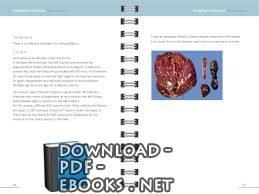📘 قراءة كتاب Booklet Poultry Diseases أونلاين


أمراض الدواجن المهمة
5
4
الأمراض المعدية التنفسية
الرشاشيات
10
Avain الأنفلونزا
12
الطيور Metapneumovirus التهاب الأنف و الرغامى / TRT
14
التهاب الشعب الهوائية المعدية
16
المعدية زكام
20
المعدية التهاب الحنجرة و الرغامى
22
الميكوبلازما جاليسبتكم "CRD"
27
الميكوبلازما Synoviae
30
نيوكاسل مرض
32
الأمراض السرطانية
اللمفاوية Leucosis
36
ماريك المرض
38
الطيور الغدة الأمراض فيروس
البيض متلازمة السقوط '76
44
إدراج التهاب الكبد في الجسم
48
أمراض فيروسية متنوعة
الطيور التهاب الدماغ
54
الدجاج فقر الدم الفيروسات
58
الطير جدري
60
المعدية جرابي مرض
62
Malabsorbtion متلازمة / التقزيم التقزم متلازمة
66
ريو العدوى بالفيروس
68
المحتويات
المحتويات
البكتيرية متنوعة الأمراض
Colibacilosis
72
الطير الكوليرا
76
المعدية الزليل
78
الميتة المعوية
80
Ornithobacterium Rhinotracheale (OR)
84
المرض الدجاجية / طير التيفوئيد
86
الأمراض الطفيلية
الرؤوس السوداء
90
الكوكسيديا
92
العث الأحمر
96
الديدان
98
الأمراض نقص
فيتامين بي
102
VitaminD3
103
فيتامين
104
سلامة الأغذية في الدواجن
مقدمة
106
السالمونيلا
106
العطيفة
111
تشخيص وأخذ العينات
115
7
6
مقدمة
مقدمة
مقدمة
الطبعة الأولى من "أمراض الدواجن هام" إنترفيت وكان في
عام 1972، وأنها لا تزال واحدة من أكثر لدينا المنشورات المطلوبة.
كتيب سهل الاستخدام وعملي لفهم أساسي
لأهم أمراض الدواجن للأشخاص العاملين في
إدارة الدواجن .
هذه هي النسخة الخامسة المحدثة المطبوعة في عام 2013 بمعلومات
إضافية جديدة تستند إلى التطورات الجديدة في
أمراض الدواجن والتقدم المحرز في MSD Animal Health Poultry Research
في تطوير منتجات جديدة إضافية.
تلتزم MSD Animal Health Research بالتعاون مع
صناعة الدواجن في جميع أنحاء العالم لتطوير ودعم الحلول
للسيطرة على أمراض الدواجن. MSD Animal Health هي أكثر من مجرد لقاحات
.
للحصول على معلومات مفصلة عن أي من منتجاتنا ، يرجى الاتصال
بممثل MSD Animal Health أو Intervet International
BV - جزء من MSD Animal Health. Intervet
International BV
Boxmeer- Holland، PO Box 31
5830 AA Boxmeer، The Netherlands
الهاتف +31 485587600 - الفاكس +31 485577333
البريد الإلكتروني info@merck.com - www.merck.com
9
8
الأمراض التنفسية
المعدية أمراض
الجهاز التنفسي المعدية أمراض الجهاز التنفسي المعدية
t؟ "TQFSHJMMPTJT
t؟" WBJO؟ * OnVFO [B
t؟ " WJBO؟ NFUBQOFVNPWJSVT؟ 3IJOPUSBDIFJUJT؟ 535
ر؟ * OGFDUJPVT؟ #SPODIJUJT
ر؟ * OGFDUJPVT؟ $ PSZ [B
ر؟ * OGFDUJPVT؟ -BSZOHPUSBDIFJUJT
ر؟ .ZDPQMBTNB؟ (BMMJTFQUJDVN؟ ث 3 $٪ ث
ر؟ .ZDPQMBTNB؟ 4ZOPWJBF
ر؟ / FXDBTUMF؟٪ JTFBTF
11
10
الأمراض المعدية التنفسية
الرشاشيات
الأمراض المعدية التنفسية
الرشاشيات
العلاج والسيطرة
لا يوجد علاج محدد للطيور المصابة. الأفضل هو إزالة
وتدمير
!
الطيور المصابة.
النظافة الصارمة في المربي (بيض التفريخ) وإدارة المفرخات
ضرورية. يعد اختيار وجودة القمامة أمرًا مهمًا أيضًا لمنع استخدام
نشارة الخشب أو القش التي تحمل الأبواغ.
قد تكون مكافحة التفريخ باستخدام مطهر مضاد للفطريات أمرًا بالغ الأهمية في
إجراءات التنظيف والتطهير للسيطرة على عدوى الفطريات.
الآفات الجسيمة في الرئتين
داء الرشاشيات
(الالتهاب الرئوي الفطري)
السبب
الفطريات الرئيسية التي تسبب داء الرشاشيات في الدواجن هي
الرشاشيات
المدخنة
.
الانتقال
يتم الانتقال عن طريق استنشاق جراثيم الفطريات من القمامة الملوثة
(مثل نشارة الخشب والقش) أو الأعلاف الملوثة. قد
تساهم المفرخات أيضًا في إصابة الكتاكيت.
الأنواع أ
!
تتأثر
صغار الدجاج المعرضة للإصابة. الدجاج الأكبر سنًا أكثر مقاومة
للعدوى.
قد تُصاب أيضًا طيور الديك الرومي ، والدراج ، والسمان ، والبط ، والفراخ .
العلامات السريرية:
الدجاج المصاب مكتئب وعطش.
يمكن ملاحظة التنفس السريع واللهاث . معدل الوفيات متغير ، من 5 إلى 50٪.
تشمل الآفات الجسيمة الرئتين والحويصلات الهوائية في المقام الأول.
يمكن العثور على آفات بحجم رأس الدبوس الأصفر والأبيض . في بعض الأحيان تمتلئ كل تجاويف الجسم
نمو الفطريات الحبيبية الصغيرة الصفراء والخضراء.
التشخيص يمكن التعرف على
وجود
دخان الرشاشيات
المجهري
أو حتى بالعين المجردة في بعض الأحيان في الممرات الهوائية للرئتين أو
في الحويصلات الهوائية أو في آفات التجويف البطني. يمكن
تأكيد داء الرشاشيات عن طريق عزل وتعريف الفطر من الآفات.
13
12
الأمراض المعدية التنفسية
أنفلونزا الطيور
الأمراض المعدية التنفسية
أنفلونزا الطيور
أنفلونزا الطيور
(AI)
السبب
هو سبب انفلونزا الطيور من قبل
الفيروسة المخاطية القويمة
. هناك العديد من
الأنماط المصلية.
نعلم حاليًا أن هناك 16 نوعًا من أنواع H و 9 أنواع N ويمكن أن
تظهر في جميع أنواع التوليفات. بالنسبة للدواجن أهمها
H5 و H7 و H9. تختلف الإمراضية باختلاف سلالات أنفلونزا الطيور
عالية الإمراض و LPAI (عالية أو منخفضة الإمراض).
ينتقل
فيروس أنفلونزا الطيور من الفتحات والفم والملتحمة والمذرق.
تعد جسيمات الفيروس المحمولة جواً من الجهاز التنفسي والفضلات
والأشخاص الذين يحملون الفيروس على ملابسهم ومعداتهم هي
الطرق الرئيسية لانتقال العدوى.
قد تكون الطيور المائية المهاجرة والطيور البرية الأخرى المصابة بفيروس أنفلونزا الطيور مصدرًا للعدوى.
الأنواع أ
! ثبت أن فيروسات أنفلونزا الطيور
المصابة
تصيب بشكل طبيعي مجموعة واسعة من الأشخاص
مجموعة متنوعة من الطيور البرية والداجنة. تكمن المشاكل الرئيسية في إنتاج الدواجن
في الدجاج والديك الرومي والبط.
العلامات
السريرية: تختلف العلامات السريرية ، اعتمادًا على الإمراضية (HPAI و LPAI)
لفيروس أنفلونزا الطيور المتضمن وعوامل أخرى مثل الأنواع المضيفة والجنس
والعدوى المتزامنة والمناعة المكتسبة والعوامل البيئية.
يُظهر LPAI أعراضًا خفيفة بشكل عام: سعال تنفسي ، عطس ،
عيون مبللة ، انخفاض في إفرازات الأنف ، قلة الخمول في
تناول العلف وانخفاض محدود في إنتاج البيض ؛ معدل وفيات منخفض.
يُظهر أنفلونزا الطيور عالية الضراوة (HPAI) بداية سريعة مع زيادة معدل الوفيات حتى قبل
ظهور العلامات السريرية ، والاكتئاب ، وانخفاض تناول الطعام والمياه ، والانخفاض الحاد
في إنتاج البيض ويمكن أن يتراوح معدل النفوق بين 50-90٪.
التشخيص
تشير العلامات السريرية إلى وجود الذكاء الاصطناعي. التأكيد النهائي عن طريق الاختبارات المعملية:
-
الكشف المباشر عن بروتينات AI أو الأحماض النووية (RNA) باستخدام PCR.
-
عزل الفيروس من الأعضاء المصابة أو مسحات القصبة الهوائية أو الرغامى.
-
فحص الأمصال من عينات الدم بعد الإصابة وللمراقبة الروتينية
لإظهار أجسام مضادة محددة لأنفلونزا الطيور.
العلاج
لا يوجد علاج لأنفلونزا الطيور. تساعد المضادات الحيوية في
السيطرة على الالتهابات البكتيرية الثانوية.
الوقاية والمكافحة
في العديد من البلدان ، يعد الذكاء الاصطناعي مرضًا يجب الإبلاغ عنه وله
لوائح محلية محددة بشأن مكافحته.
في المناطق الخالية من الذكاء الاصطناعي ، يتم التحكم في المرض (LPAI و HPAI) عن طريق المراقبة
والقضاء.
في حالة المناطق المصابة LPAI يمكن للبلدان أن تقرر السماح بالتطعيم
فقط لـ LPAI.
في حالة توطن أنفلونزا الطيور الشديدة الإمراض و / أو التطعيم LPAI قد يُسمح به.
يتم التطعيم عمومًا بلقاحات أنفلونزا معطلة تعتمد على
السلالة من النوع H المسببة لتفشي المرض
الدواجن الأمراض الشعبي
أمراض الدواجن 13TH طبعة الشعبي
أمراض الدواجن أطلس الشعبي
أمراض الدواجن بووك
اطلس امراض الدواجن بالصور
الدواجن الأمراض الصور الشعبي
أمراض الدواجن باور بوينت
سيفا الدواجن أطلس
امراض الدواجن وعلاجها سامى علام قوات الدفاع الشعبي
حجم الكتاب عند التحميل : 2.5 ميجا بايت .
نوع الكتاب : pdf.
عداد القراءة:
اذا اعجبك الكتاب فضلاً اضغط على أعجبني و يمكنك تحميله من هنا:

شكرًا لمساهمتكم
شكراً لمساهمتكم معنا في الإرتقاء بمستوى المكتبة ، يمكنكم االتبليغ عن اخطاء او سوء اختيار للكتب وتصنيفها ومحتواها ، أو كتاب يُمنع نشره ، او محمي بحقوق طبع ونشر ، فضلاً قم بالتبليغ عن الكتاب المُخالف:
 قبل تحميل الكتاب ..
قبل تحميل الكتاب ..
يجب ان يتوفر لديكم برنامج تشغيل وقراءة ملفات pdf
يمكن تحميلة من هنا 'http://get.adobe.com/reader/'


 منصّة المكتبة
منصّة المكتبة